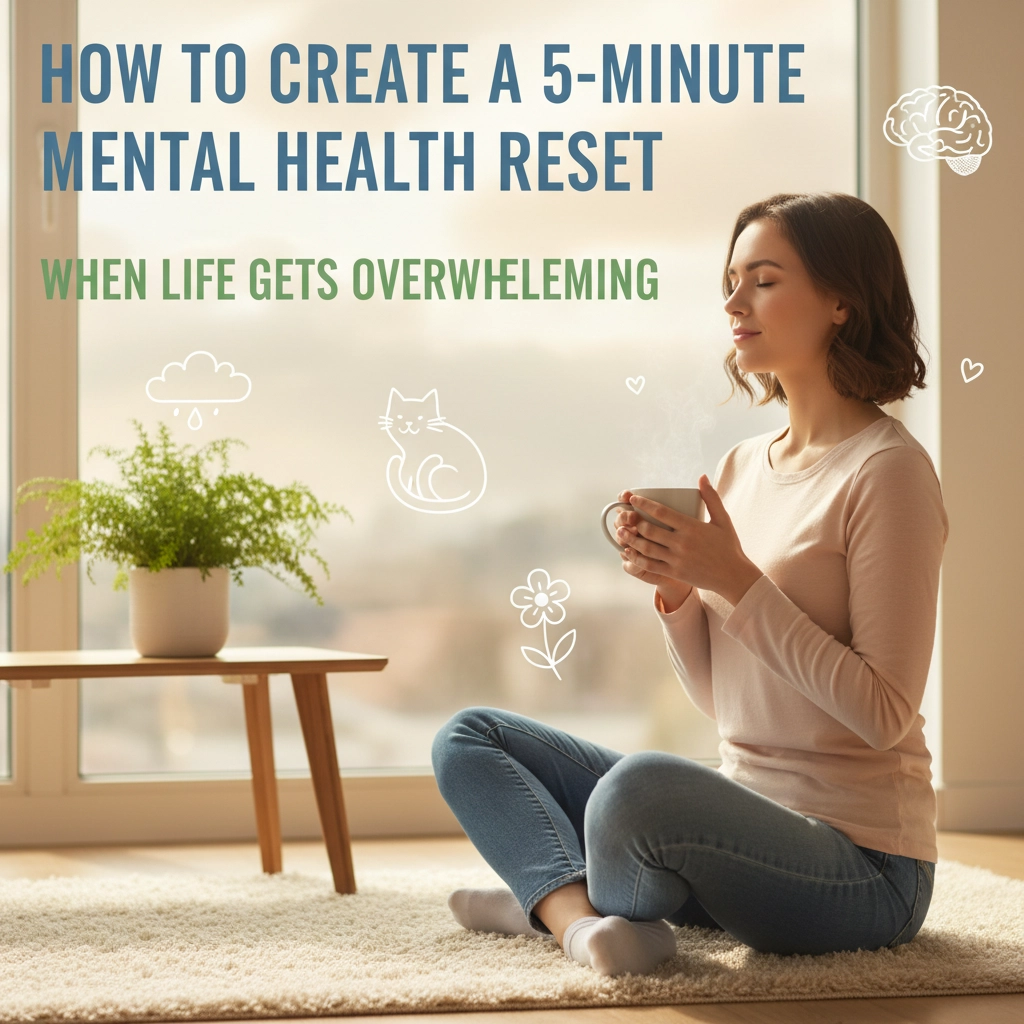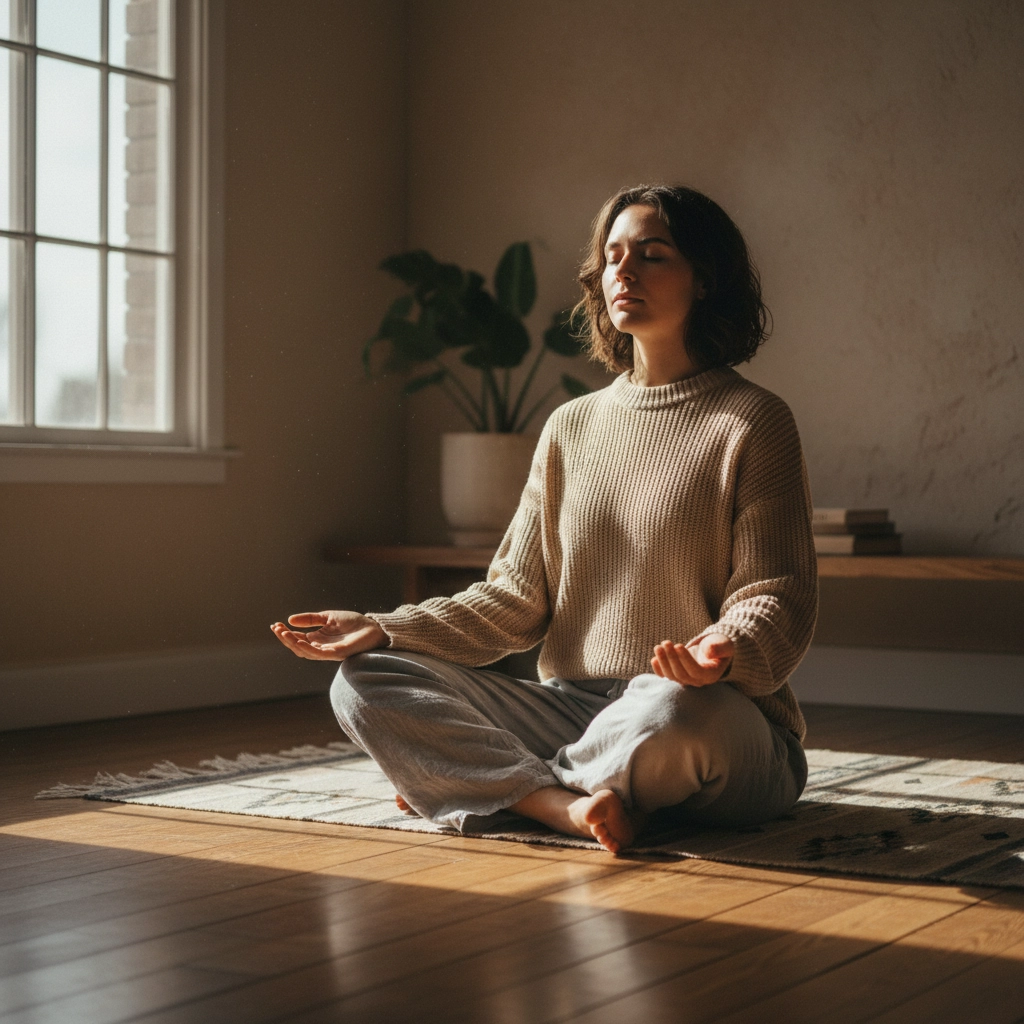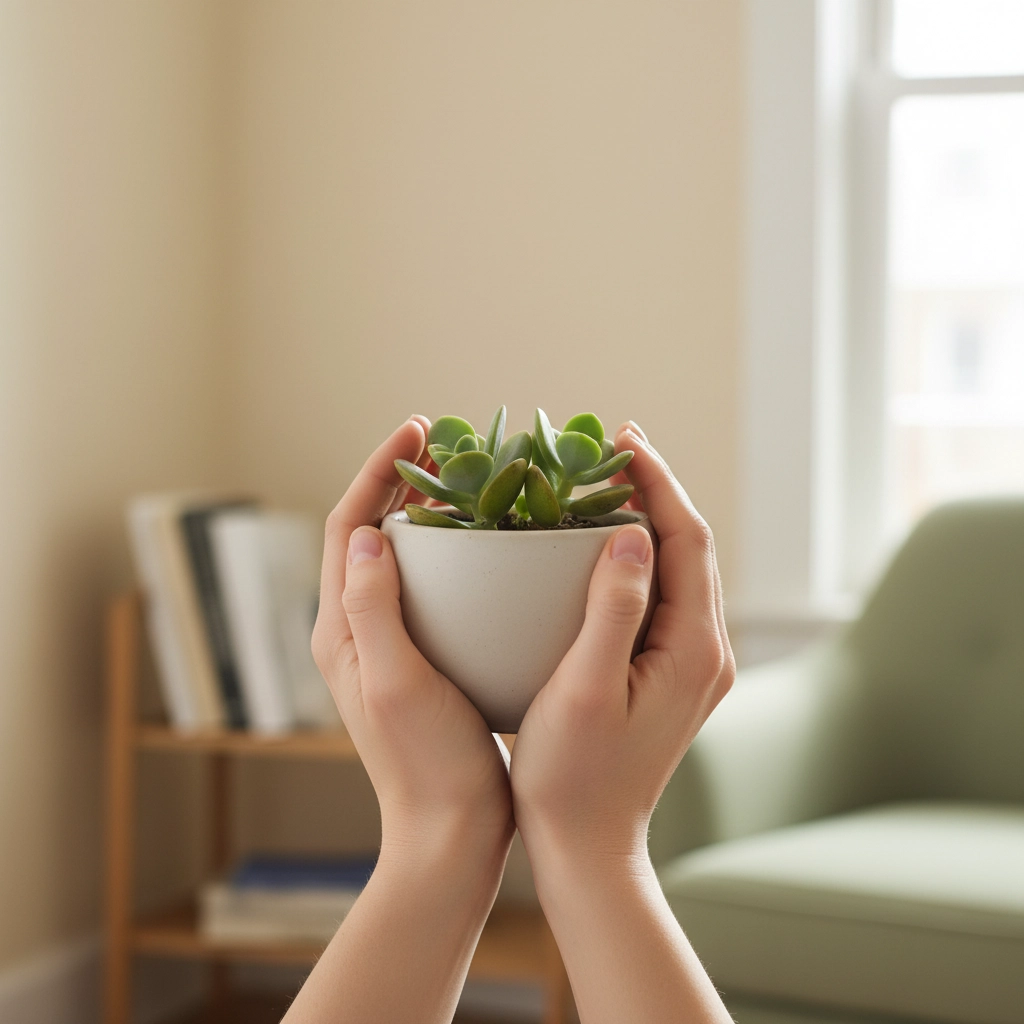How to Create a 5-Minute Mental Health Reset When Life Gets Overwhelming

I'm sitting here at 2 PM on a Tuesday, and I just spent the last hour spiraling about everything I need to get done this week. You know that feeling? When your brain feels like it's running on fifteen different tabs, three of them are frozen, and one is playing that annoying song you can't get out of your head.
This is exactly when I need to stop what I'm doing and reset. Not in some Instagram-perfect way with fancy props and perfect lighting, but in a real, messy, "I'm about to lose my shit" kind of way.
Here's what I've learned: you don't need an hour-long yoga class or a meditation retreat to calm your nervous system. Sometimes five minutes of intentional movement and breathing is exactly what stands between you and a complete meltdown.
Why Five Minutes Actually Works (When Everything Else Feels Impossible)
Let's be honest, when life gets overwhelming, the last thing any of us wants to hear is "just meditate for an hour." Who has time for that? And when you're already feeling guilty about everything you're not getting done, adding another lengthy self-care routine feels like setting yourself up to fail.
But here's the thing about five minutes: it's doable. It's the amount of time you spend scrolling through your phone or making coffee. It's not this huge commitment that your anxious brain can talk you out of. And weirdly enough, those short bursts of intentional reset can be just as effective as longer practices.
Your nervous system doesn't need a full production to calm down. It just needs a signal that you're safe, that you can breathe, and that this moment, right here, is manageable.

The Simplest Yoga Reset That Actually Works
This isn't about perfect poses or looking like those serene people on yoga Instagram. This is about using your body to tell your brain that everything is going to be okay.
Child's Pose Breathing (2 minutes)
Start by kneeling on the floor, or hell, even your bed if that's where you are. Sit back on your heels, then fold forward until your forehead touches the ground. Let your arms rest alongside your body or stretch them out in front of you, whatever feels better.
Now breathe. Not some complicated breathing pattern, just slow, deep breaths that fill up your belly. Count to four on the inhale, hold for a second, then exhale for six counts. The longer exhale is what actually triggers your parasympathetic nervous system, the part that helps you chill out.
I used to think this pose looked ridiculous. Like, great, now I'm literally in the fetal position on my living room floor. But you know what? Sometimes that's exactly what we need. Sometimes we need to make ourselves small and safe for a minute.
Gentle Spinal Waves (1 minute)
Come up to hands and knees, again, bed works fine if the floor feels like too much. Start moving your spine like a slow wave, arching and rounding your back. This isn't about perfect cat-cow pose form; it's about getting your spine moving and creating some space in your body.
Move as slow as you want. Let it feel good. If your lower back is tight from stress, spend extra time there. If your shoulders are up around your ears from tension, roll them around. Your body knows what it needs.
Standing Forward Fold Reset (2 minutes)
Stand up and just let yourself hang forward. Bend your knees as much as you need to. Let your arms hang like dead weight. Sway a little if it feels good.
This isn't about touching your toes or proving how flexible you are. It's about literally letting everything go for a minute. All that weight you've been carrying, the deadlines, the worry, the mental load, just let it hang there with you.
While you're hanging out down there, breathe into your back body. Picture your breath going into your lower back, your ribs, between your shoulder blades. Sometimes I imagine I'm breathing space into all the tight, wound-up places.

The Breathwork That Saved My Sanity
Can we talk about breathwork for a second? Because I used to think it was kind of woo-woo bullshit until I had my first real panic attack and suddenly realized that yeah, breathing actually matters.
The 4-7-8 Reset
This one comes from Dr. Andrew Weil, and it's ridiculously simple. Inhale for 4 counts, hold for 7, exhale for 8. Do this four times total. That's it.
The magic is in that long exhale. When you exhale longer than you inhale, you're basically telling your nervous system to pump the brakes. It's like a direct message to your brain that says, "Hey, we're not running from a tiger right now. We can slow down."
I do this one when I'm lying in bed and can't sleep because my brain won't shut up. Or when I'm in my car before a stressful meeting. Or honestly, sometimes when I'm hiding in the bathroom at work because people are just... a lot.
Box Breathing for When Everything Feels Chaotic
Inhale for 4, hold for 4, exhale for 4, hold for 4. Repeat. It's called box breathing because you're literally making a square with your breath pattern.
I like this one because it gives my anxious brain something to focus on. Instead of spiraling about my to-do list or that thing I said five years ago that I'm suddenly remembering, I'm just counting to four over and over again.
Setting the Mood (Because Environment Actually Matters)
Look, you can do these resets anywhere: your office bathroom, your car, your bedroom at 3 AM when you can't sleep. But if you can control your environment even a little bit, it makes a difference.
Music That Actually Helps
I've got a playlist that's just five-minute songs for exactly this purpose. Nothing too intense, nothing that's going to make me emotional. Think Bon Iver's quieter stuff, some ambient music, maybe some acoustic versions of songs I already love.
Sometimes I put on nature sounds: rain, ocean waves, that kind of thing. Sometimes I just want silence. The key is having something ready to go so you're not spending half your reset time scrolling through Spotify.
Creating Your Corner
You don't need a whole meditation room or a perfectly curated space. But maybe there's a corner of your bedroom, or a spot by the window, or even just your couch where you can consistently go to reset.
I keep a yoga block and a blanket in my bedroom corner. Not because I need props, but because having them there reminds me that this is a thing I do. It's like leaving your running shoes by the door: it makes the barrier to entry just a little bit lower.

When Life Is Too Messy for Perfect Practice
Here's the real talk: most of the time, my five-minute resets don't happen in some peaceful, Instagram-worthy setting. They happen when I'm overwhelmed, when the kids are fighting in the next room, when I've got seventeen things on my mind and five minutes feels like a luxury I can't afford.
That's exactly when you need it most.
Sometimes my reset is doing child's pose on my bedroom floor while my dog tries to lick my face. Sometimes it's box breathing in my car in the Target parking lot. Sometimes it's a forward fold in my kitchen while dinner is cooking and I just need a moment to not be responsible for anything.
The perfectionist in me used to hate this. Where was the calm, the quiet, the perfect conditions? But I've learned that real life is messy, and our mental health practices need to work within that messiness.
Making It Stick (Without the Guilt)
I used to be really good at starting these practices and then completely abandoning them after a week. The key for me has been making it so simple that it's harder to skip than to just do it.
I don't have a perfect routine. I don't do it at the same time every day. But when I feel that familiar tightness in my chest, or when my thoughts start racing, or when I catch myself holding my breath: that's my cue.
It's not about being consistent in some perfect way. It's about having tools ready when you need them.
Some days, five minutes of yoga and breathing is exactly what I need to turn my whole day around. Other days, it just takes the edge off enough to keep going. And honestly? Both of those outcomes are wins.
The goal isn't to eliminate overwhelm from your life: because let's be real, that's not happening. The goal is to have something you can do when life gets to be too much. Something that reminds your body and brain that you're safe, that you can handle this, and that sometimes the most revolutionary thing you can do is just breathe.
Your five-minute reset doesn't have to look like anyone else's. It just has to work for you, in your real life, with all its beautiful messiness.

No comments:
Post a Comment